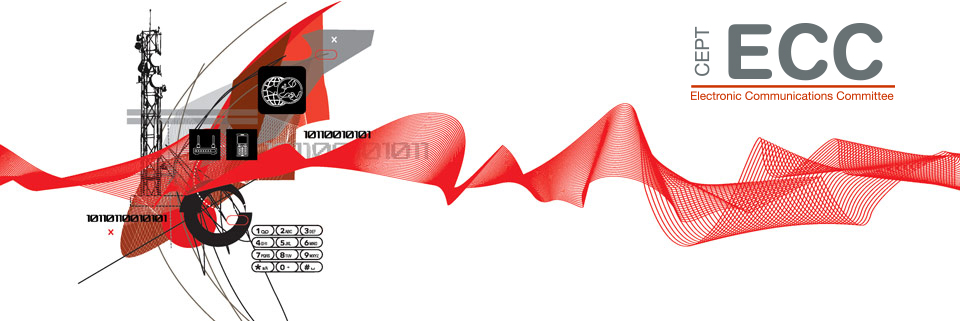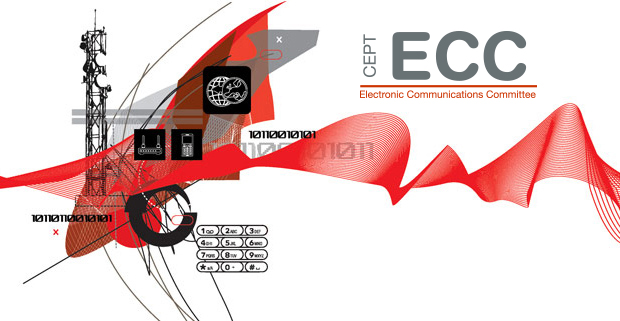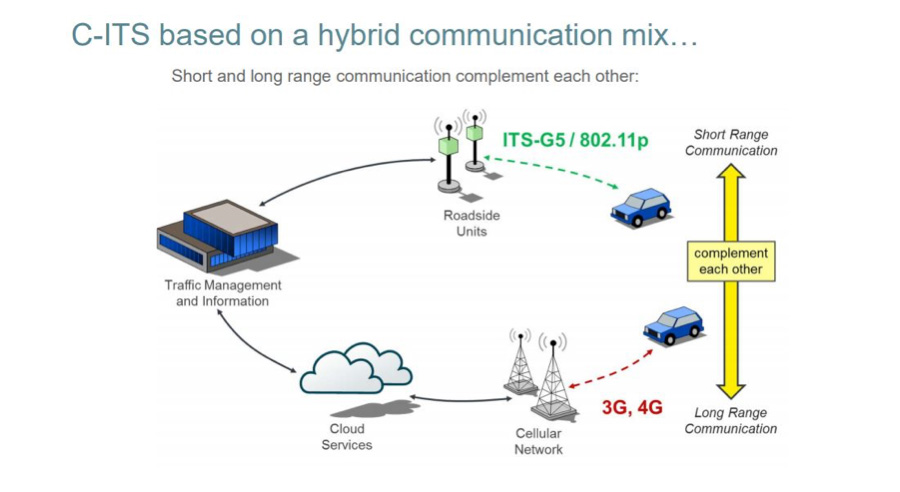Spectrum assists drive towards better road and rail safety
Intelligent transport systems make road and rail networks work more efficiently, and spectrum is playing a key role in facilitating their advancement, writes Robin Donoghue
Road fatalities are a matter of concern, with the World Health Organization estimating that 1.35 million people are killed worldwide each year. Road infrastructure and road surroundings are a contributing factor in more than 30% of crashes. Intelligent transport systems (ITS) – for both rail and road – present an opportunity to make transportation safer and smoother.
Road ITS include cooperative systems based on real-time communications both between vehicles and between vehicles and infrastructure.
Urban rail ITS consist of public transport systems permanently guided by at least one control and management system. They are intended to operate local, urban and suburban passenger services, and are separated from general road and pedestrian traffic.
In our ECC Newsletter of August 2019 we described the developments that were ongoing at the time for urban rail ITS. These included the revision of ECC Decision (08)01 and the development of the CEPT Report 71:
- There was an amendment of ECC Decision (08)01 on the harmonised use of safety-related ITS in the 5875-5935 MHz frequency band; and
- CEPT Report 71 was presented to the European Commission in response to the mandate to study the extension of the ITS safety-related band at 5.9 GHz.
One of the main beneficiaries of the revision of ECC Decision (08)01 was urban rail, where this particular ITS application has the use of the 5925-5935 MHz frequency band and shares spectrum with other ITS uses in the frequency band 5915-5925 MHz.
However, urban rail ITS were not the only beneficiary of these regulatory changes. At the same time as Decision(08)01 was published, the ECC also published:
- An amendment to the ECC Recommendation (08)01, which addresses frequency usage for non-safety applications in the band 5855-5875 MHz for ITS.
The consequence of these changes is that, when implemented by CEPT administrations, the 5855-5935 MHz band may now be used on a national basis for ITS applications of one form or another. There is 80 MHz in total, of which 70 MHz is available for road ITS applications.
In the meantime, the European Telecommunications Standards Institute (ETSI) is developing standardised solutions for ensuring co-channel sharing mechanisms and implementation of priority rules between road ITS and urban rail ITS applications.
Moreover, work is still in progress in ETSI regarding the road ITS part and, more specifically, the co-existence of the two current technologies in the band, namely ITS-G5 and LTE-V2X. ETSI is expected to complete this work in the spring of 2021.
The EU has adopted the proposals made in CEPT Report 71, and in October 2020 published its Commission Implementing Decision (EU) 2020/1426.
For safety-related ITS
The frequency arrangement is based on a block size of 10 MHz, starting at the lower edge of the band, at 5875 MHz.
For road ITS:
In 5875-5925 MHz, road ITS applications shall use channels within the boundaries of each 10 MHz block. Channel bandwidth may be lower than 10 MHz.
For urban rail ITS:
In 5875-5915 MHz, urban rail ITS applications shall use channels within the boundaries of each 10 MHz block. Channel bandwidth may be lower than 10 MHz.
In 5915-5935 MHz, the maximum channel bandwidth is 10 MHz for urban rail ITS applications. The dotted line in the diagram above shows the preferred harmonised frequency arrangement but, at national level, some rollouts may use a channel centred at 5925 MHz.
For non-safety-related ITS
The frequency arrangement is based on a block size of 10 MHz starting at the lower edge of the band, at 5855 MHz.
For ITS:
In 5855-5875 MHz, ITS applications shall use channels within the boundaries of each 10 MHz block. Channel bandwidth may be lower than 10 MHz.
Sharing with services above 5925 MHz
Recently, ECC published two reports from CEPT to the European Commission. They were in response to the mandate "to study feasibility and identify harmonised technical conditions for Wireless Access Systems including Radio Local Area Networks in the 5925-6425 MHz band for the provision of wireless broadband services". The reports were:
- CEPT Report 73 – Report A: Assessment and study of compatibility and coexistence scenarios for WAS/RLANs in the band 5925-6425 MHz. It was published in March 2020, and
- CEPT Report 75 – Report B: Harmonised technical parameters for WAS/RLANs operating on a coexistence basis with appropriate mitigation techniques and/or operational compatibility/coexistence conditions, operating on the basis of a general authorisation. It was published in November 2020.
The CEPT Report 75 sets out the proposed harmonised technical conditions for Wireless Access Systems including Radio Local Area Networks (WAS/RLAN) in the 5945-6425 MHz band.
There are two types of WAS/RLAN envisaged in this spectrum:
- Low Power Indoor (LPI) devices;
- Very Low Power (VLP) devices.
The bandwidth of 480 MHz (5945-6425 MHz) allows for individual WAS/RLAN up to 160 MHz in operation.
The VLP devices operating above 5935 MHz can be used anywhere including immediately in the vicinity of urban rail infrastructure. For these devices, ECC has set a stringent, but time limited, Out-of-Band (OOB) emission limit of -45 dBm/MHz to protect the urban rail ITS systems below 5935 MHz. The ECC at its meeting in November 2020 initiated further studies on this OOB emission limit. However, in the absence of any justified evidence, a value of -37 dBm/MHz, for the OOB limit below 5935 MHz, will be adopted from 1 January, 2025.
Urban rail projects take considerable time to plan and construct, e.g. the Copenhagen metro was over 10 years in construction. Therefore, developers of urban rail ITS need to be mindful of the likely proliferation of WAS/RLAN over the next few years. They need to ensure the receivers in the system are compliant with all relevant EU directives and national regulations for placing apparatus on the market. They also need to be aware of the likely OOB emissions from WAS/RLAN in future.
Developments in ITS
The C-Roads Platform is an initiative by 18 European roads authorities. It aims to bring together technologies to allow for the effective exchange of information between road users and between road users and road infrastructure.
In developing an effective ITS system, it has become apparent that a range of technologies are available to provide the needed communications links. For the communications between vehicles (V2V) and between the vehicle and infrastructure (V2I) it is, however, clear that this needs to be a radio link. Present proposals are for the ETSI G5 (802.11 based) technology and the LTE-V technology (based on commercial MFCN).
Both these technologies present certain advantages. It is expected, however, that their respective advantages can be used to complement each other.
Source: C-Roads / Car 2 Car communication consortium
The 50 MHz of spectrum 5875-5925 MHz for safety-related road ITS – set out in the 2020 revision of ECC Decision (08)01 – plus the 20 MHz of spectrum 5855-5875 MHz could allow for seven channels of 10 MHz for road ITS. How these channels are used, and by which technology at any time and location, remains a matter of consideration.
The ETSI Technical Committee for ITS is currently developing a number of reports to help resolve many of these issues, including reports on interoperability of the radio systems.
Future spectrum developments in ITS
It is envisaged that the initial deployments of road ITS will have a certain level of functionality, which can be achieved with the present spectrum allocation to ITS. However, as more vehicles capable of collaborative communication and more infrastructure is installed by road authorities, the need for higher data speeds will likely follow.
It is also likely that enhancements to the initial functionality over time will further increase the data requirements of road ITS. There may be a need for further spectrum to facilitate the truly connected and collaborative car. Estimates of this additional spectrum demand have not yet been finalised but may potentially be in the order of 140 MHz.
It has been suggested that there may be a need for larger channel width of perhaps 20 MHz or even 40 MHz. Also, as the mobile industry moves to make effective use of higher frequencies, as set out in the Spectrum-for-wireless-broadband-5G, the option remains for ITS technologies to utilise the commercial infrastructure in these frequency bands as it becomes available.
Robin Donoghue, Spectrum Expert
European Communications Office







